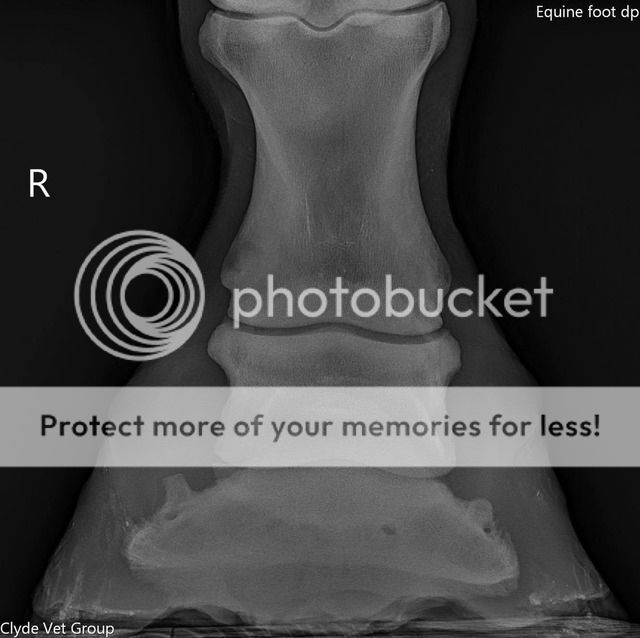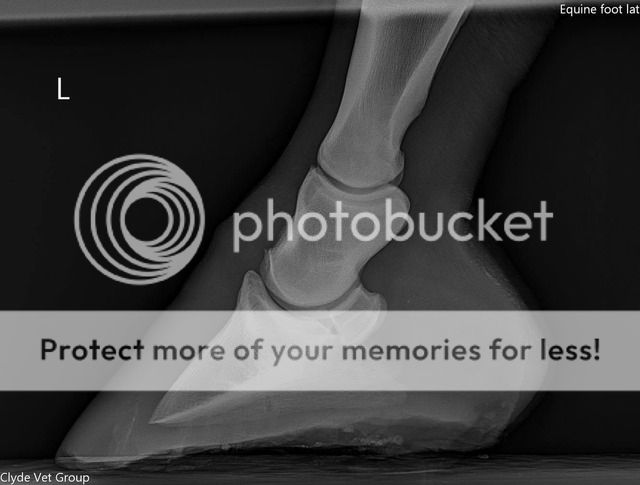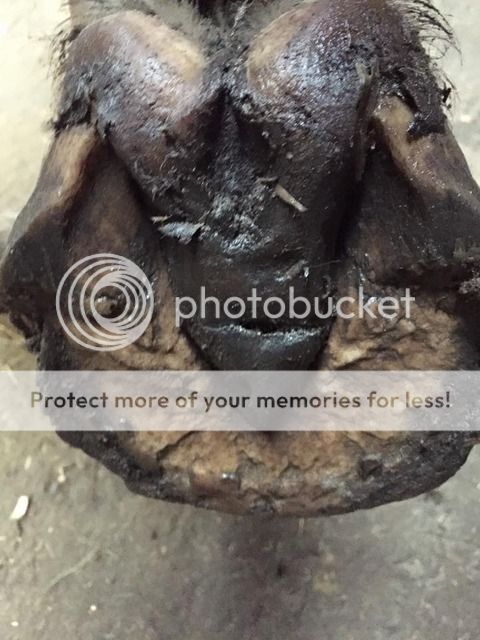Shutterbug
Well-Known Member
Arion is a 16'2 WB gelding, almost 15 years old. Never had a day of front leg lameness in the 9 years I have owned him, went a little lame whilst out hacking a week ago. Fine on a straight line initially but going between hind left and front right leg lameness on a circle. Suspected an abcess, poulticed for 3 days - nothing, no heat, no swelling, no knocks or bruises. He is shod in front only but has always had one foot smaller than the other and a slightly upright pastern as a result. He was diagnosed with mild arthritic changes in his hind left 5 years ago, has had cortisone injections x 3 and no issues in the last 2 years with his hind legs other than general winter stiffness.
Vet came out yesterday, after initial exam and trotting up he nerve blocked the lower area of the leg and Arion showed around an 80% improvement on a circle, was fine behind. He is to attend for xrays in a few days and has been given Danalon in the meantime and I have been advised to follow his routine as normal. I had the farrier remove his shoes this morning pending xrays
Vet has mentioned possibilites of issues with the coffin joint, pedal bone or possible Navicular. I have done some reading and looking back now the signs are all there for Navicular. His smallish hoof, he's had the occasional short striding, stumbling, he has been very lazy of late - my big striding warmblood has become a sluggish donkey over the last 3/4 weeks.
I know nobody can tell me if he does have Navicular, only a vet can confirm that but I am so terribly worried about him - I have no experience with this kind of condition and no idea what to expect going forward if he does have Navicular, or indeed a problem with his coffin joint or pedal bone? So, I am looking for your experiences, good and bad - recovery time, shoes on or off? Remedial shoeing? Anyone have similar symptoms with their own horse?
Vet came out yesterday, after initial exam and trotting up he nerve blocked the lower area of the leg and Arion showed around an 80% improvement on a circle, was fine behind. He is to attend for xrays in a few days and has been given Danalon in the meantime and I have been advised to follow his routine as normal. I had the farrier remove his shoes this morning pending xrays
Vet has mentioned possibilites of issues with the coffin joint, pedal bone or possible Navicular. I have done some reading and looking back now the signs are all there for Navicular. His smallish hoof, he's had the occasional short striding, stumbling, he has been very lazy of late - my big striding warmblood has become a sluggish donkey over the last 3/4 weeks.
I know nobody can tell me if he does have Navicular, only a vet can confirm that but I am so terribly worried about him - I have no experience with this kind of condition and no idea what to expect going forward if he does have Navicular, or indeed a problem with his coffin joint or pedal bone? So, I am looking for your experiences, good and bad - recovery time, shoes on or off? Remedial shoeing? Anyone have similar symptoms with their own horse?






